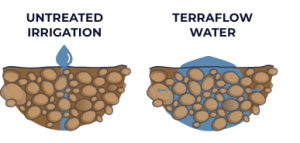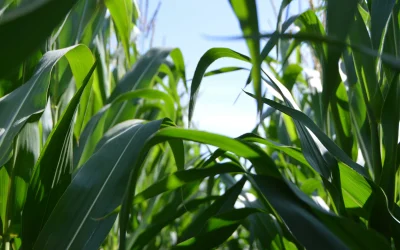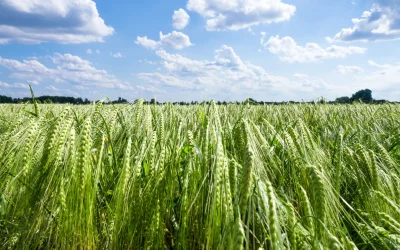Key Takeaways
- Cotton’s irrigation requirements depend on location, soil type and crop stage. For instance, western U.S. cotton may need twice the water of Southeast-grown cotton due to arid conditions.
- About 70% of a cotton crop’s water use occurs between first flower and boll burst. Proper irrigation during this window is vital to prevent significant yield losses, potentially up to 80%.
- Strategic water stress helps control vegetative growth and encourages boll retention. Overwatering, on the other hand, can harm root health, delay maturity and reduce yield and quality.
- Surface, sprinkler and drip irrigation systems offer different advantages depending on field conditions and climate. Drip irrigation, while more expensive, provides the highest efficiency in hot, dry climates.
- Tools like soil moisture sensors, weather-based models and satellite imagery help farmers irrigate at the right time and avoid under- or overwatering, ultimately improving water use efficiency.
- TerraFlow® by UpTerra improves water movement and retention in the soil using vortexing and frequency transmission technology, leading to better root development, nutrient uptake and cotton yield.
- Cotton farmers using TerraFlow have seen a 32% increase in yield, a 31.3% increase in bolls per plant and improved fiber quality—demonstrating its impact on productivity and profitability.
Cotton is a relatively drought-tolerant crop, making it an ideal crop choice for growers looking to maximize irrigation efficiency. In the northern Texas panhandle, for example, cotton requires 12 to 24 inches of water per acre compared to the 24 to 30 inches per acre for corn.(1) Over ⅓ of U.S. cotton acres are irrigated, which offers more reliable soil moisture throughout the season for greater yield potential and stability year to year.(2) Let’s dive into how irrigation supports the cotton crop’s development and explore ways to maximize cotton irrigation efficiency.
Cotton Water Requirements and Crop Response
Cotton’s water requirements vary depending on the growing region and other factors, including soil type, environmental conditions and crop growth stage. Generally, cotton grown in the western areas of the U.S. requires up to two times more water per growing season than varieties grown in the more humid Southeast. For example, long-season varieties grown in arid regions of the southwest require 40 inches of water per season, while those same varieties require 30 inches in Lubbock, Texas, and as few as 18 inches in the humid Southeast.2
Timely, optimized irrigation at key growth stages helps boost yield potential while controlling input costs. Supplementing soil moisture throughout the season with irrigation ensures the crop can access vital soil moisture and uptake nutrients to maximize growth.
But, just as insufficient moisture can limit a crop’s potential, too much water also leads to problems, including nutrient leaching, higher risk for foliar diseases and poor root health.
Allowing a certain level of water stress between irrigation or rainfall events can actually benefit cotton plants, as it helps moderate their vegetative growth. Without periodic water stress events during the boll-setting period, many cotton varieties tend to grow too quickly. This rapid growth can shade the lower branches, which are crucial for supplying sugars to nearby bolls. Excessive shading too early can compromise the retention of lower bolls and delay crop maturity. Thus, overwatering can lead to poor yield and lint quality.
Seasonal Water Demand
A cotton crop’s water needs vary throughout the season, with 70% of the seasonal water use occurring from first flower to first boll burst. Poor water management during critical cotton growth stages can lead to a 50–80% yield reduction.3
| Growth Stage | Total seasonal water use (%) |
| Up to first flower | 20 |
| During first flower to peak flower | 40 |
| During peak flower to bursting of a few bolls | 30 |
| Up to maturity | 10 |
Source: Water Management in Cotton(3)
Plant Response to Water Stress
Water stress causes several morphological and physiological changes in a cotton plant. Two of the most sensitive physiological processes influenced by water stress are cell growth and hormone regulation in the plant. The ability of cells to expand affects many aspects of the cotton plant’s development, including root growth, leaf expansion and cotton fiber length. When cell growth is inhibited by water stress, the cotton plant can’t grow to its maximum potential.
Water stress also triggers hormonal changes during reproductive growth, resulting in the plant shedding squares and bolls. Properly managing soil water availability through irrigation helps the plant initiate, retain and mature more cotton bolls.
Some physical indications that the cotton crop is under water stress include:
- leaf wilting
- smaller, newly formed leaves
- shortened main stem internodes
- reddening of the leaf petioles
- slower plant growth rate
Critical Growth Stages
The cotton crop’s water use varies depending on its growth stage. Generally, the time from first square to first flower is the most critical window for managing water stress. Farmers can use irrigation technologies, including soil moisture sensors, weather monitoring devices and water-enhancing technology like TerraFlow® to ensure sufficient soil moisture during critical cotton growth stages.
Planting to emergence: Water use is relatively low at this growth stage, although sufficient water is required for germination and a strong plant stand. Irrigating before planting is recommended if the seedbed is dry, as irrigating after planting can increase the risk of seedling diseases.
Emergence to first square: Water use remains relatively low at these growth stages – typically, the crop needs less than 0.1 inches per day. Irrigation at this time contributes relatively little to yield unless there is a severe soil water deficit.
First square to first flower: Water use increases from 0.1 to 0.2 inches per day during these growth stages. The approximate three-week window from first square to first bloom is critical for managing water stress. During this vital period, vegetative growth is rapid, and the number of potential fruiting sites for the cotton crop is determined.
First flower to peak bloom: Water use by the cotton plant continues to increase up to 0.28 inches per day at these growth stages. The cotton plant may shed young bolls in response to plant stress during this time, putting yield potential at risk. Water stress can also reduce boll size and fiber quality, producing a less profitable crop.
Peak bloom to open bolls: Water use by cotton decreases each day as plants age. Water stress may still result in square and boll shedding, although these losses have less yield impact than early-season boll loss. After the bolls open, water stress is beneficial as it improves harvest conditions.
Irrigation System Design and Selection
Cotton farmers employ various irrigation methods to supplement their water needs throughout the season. The most common systems used in cotton are surface, sprinkler and drip irrigation. Each irrigation method offers benefits and limitations that the grower should consider to maximize efficiency and profitability. Soil type, water availability, field topography and climate are key factors in determining the best fit for the acres.
Types of Cotton Irrigation Systems
Surface irrigation involves diverting water down furrows or flooding the entire surface of the field. It requires a suitable grade to support water flow. Generally, row length may be a limiting factor when designing an effective flood irrigation system. The water source for surface irrigation may come from wells, rivers, lakes or reservoirs. Surface irrigation can be a cost-effective and straightforward way to meet a cotton crop’s water needs.
Sprinkler systems are also used and can provide even water distribution over the field using spray droplets. When designing a sprinkler irrigation system that meets the cotton crop’s water demands, the water supply, soil, crop, topography and atmospheric conditions should be considered.
Drip irrigation applies water directly to the crop’s root zone, increasing irrigation efficiency. Growers may choose surface or subsurface drip irrigation systems. Generally, drip irrigation is more costly to install and maintain than other irrigation options. However, it is worth the investment in hot, dry climates where water loss can reduce irrigation efficiency.
Irrigation Scheduling and Management Strategies
Optimizing the timing and frequency of water application helps promote cotton quality and yield while reducing irrigation costs. Farmers should monitor soil moisture levels regularly and adjust irrigation schedules based on weather conditions and crop development stages. Farmers can use irrigation technologies to help monitor, schedule and apply water more precisely.
Irrigation Scheduling Methods
Farmers often use several methods when deciding when to irrigate their cotton crops. Soil moisture monitoring uses real-time soil data to indicate when the crop is approaching water stress, thus indicating it’s time to irrigate. Some growers may also use drones and satellites to monitor crop health and trigger the need for irrigation.
Weather-based scheduling relies on using weather conditions and evapotranspiration rates to estimate how fast stored water in the soil will be used by the plant. Some farmers may use the “feel-test” method to determine if their soil needs additional moisture.
Irrigation Enhancing Technology
Beyond using technology to monitor soil moisture and schedule irrigation events, farmers can also use innovations to enhance the hydrating characteristics of their irrigation water.
TerraFlow by UpTerra organizes and enhances irrigation water using patent-pending vortexing and frequency transmission technology. This plug-and-play device is compatible with most irrigation systems, improving moisture distribution in the soil.

TerraFlow technology for cotton irrigation systems improves moisture distribution in the soil.
With TerraFlow, water spreads across and into the soil profile more evenly, contributing to better water availability and retention. More consistent moisture distribution has many positive agronomic impacts, including better nutrient uptake, more microbial activity in the root zone, less plant stress and healthier soils. Over time, these benefits are cumulative, helping growers grow more with fewer inputs.
Cotton farmers have seen dramatic results using TerraFlow:*
- A 32% average cotton yield increase
- A 3.6% average fiber quality increase
- A 31.3% average increase in bolls per plant
- A 12.3% average root length increase
Make the Most of Cotton Irrigation
Efficient cotton irrigation is key to unlocking the crop’s full potential while conserving water. From understanding regional water needs and recognizing critical growth stages to selecting the right irrigation system and using modern scheduling tools, cotton growers have a variety of strategies at their disposal to optimize yield and quality. However, achieving true irrigation efficiency goes beyond timing and technique—it requires the right technology.
That’s where TerraFlow makes a difference. By enhancing water distribution and availability in the soil, TerraFlow empowers farmers to reduce input costs, support root and soil health and maximize yield potential, especially in the water-limited environments many cotton growers face.
Ready to take your cotton irrigation to the next level? Contact an UpTerra representative today to learn how TerraFlow can help you grow more with less.
References
1 Ledbetter K. Cotton key player in water conservation in northern High Plains. Texas A&M AgriLife Today. 2020.
2 Cotton Incorporated. Why irrigate cotton? 2025.
3 Datta A, Ullah H, Ferdous Z, et al. Water management in cotton. 2019.




